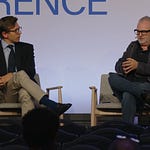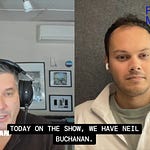At this year’s Resilience Conference in London, co-founder Leslie Hitchcock opened with a plain truth: “Getting defense tech from investment to deployment is very hard.”
The panel set out to explain why, and how to fix it. On stage were Ryan Benitez, chief commercial officer at NATO DIANA, John Ridge, chief adoption officer at the NATO Innovation Fund, and Jennifer Nelson, executive vice president at IQT.
Nelson traced the adoption problem to the gap between demos and real users. “We’re not just creating this sort of innovation theater, but actually taking that technology and getting it into the hands of the users.” She said InQTel built teams that study end customers and translate needs for startups. It sounds simple. It is not. “We’ve doubled down on it,” she said, after twenty-six years of doing the work.
Benitez described DIANA’s push to match scale with capital. “One of the mandates that we have at NATO DIANA is to build out a trusted network of investors,” he said. The program is working with about three hundred companies this year, which means the money and the mentors must keep pace. Wartime pressure only sharpens that need. “It’s about our ability to rapidly spin up something off cycle,” he said. “Let’s rapidly stand up the experimentation and get the feedback loop going with the end users.”
Ridge explained why normal product-market fit does not carry you in defense. “That is not the same when you’re selling into government,” he said. End users, requirement writers, contracting, and finance are split. “You’ve got this really convoluted chain that you need to work through and it takes time and it takes effort.”
The NATO Innovation Fund built a mission platform group to push through three things at once, adoption with real users, protection on cyber and clean cap tables, and responsible use. He also pointed to primes, old and new, as a path to market for startups that sell subsystems or new manufacturing methods.
The discussion kept coming back to speed. Ridge said war changes behavior. It removes delay and brings engineers close to operators. He warned that peacetime habits do the opposite. “We drag them further and further apart and put lots of well meaning people in the gap.” His bluntest point was about money. “If you don’t have uncommitted money in your program, you cannot afford to do proper innovation.”
Panelists agreed that some governments are getting this right. They tagged the Netherlands, the Nordics, and Estonia as places where forward momentum was strong. Benitez flagged DIANA’s Rapid Adoption Service, which lets nations with slow or complex procurement use DIANA for prototyping buys. “We can source from the DIANA portfolio and make that happen very quickly,” he said.
Capital stacks matter too. Different investors do different jobs. Ridge noted that large funds can bridge into growth rounds, corporate funds can open supply chains and platform slots, and public investors like NIF bring adoption muscle. “We shouldn’t all be trying to do each other’s business,” he said. Nelson added a caution. Not every investor needs to track every program. Founders should lean on trusted co-investors who live close to the mission and can guide where time is best spent.
The call to action was clear. “It does not count until it’s adopted,” Ridge said. Benitez put faith in founders once the path is open. “If we give them the problem set, they will figure it out.” Nelson closed the loop with a reminder that the ecosystem must carry some weight. “Startups are a crucial part of the national security apparatus,” she said. “But they need support, and they need to be advised in a way that works for what they’re looking to accomplish, and for the investors who have put money into those startups.”









